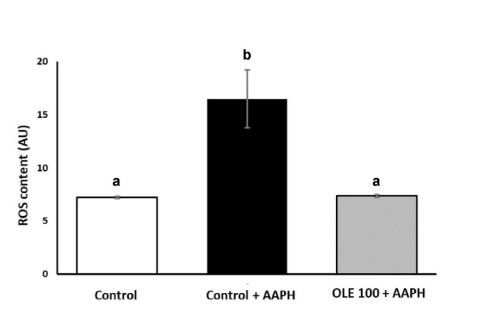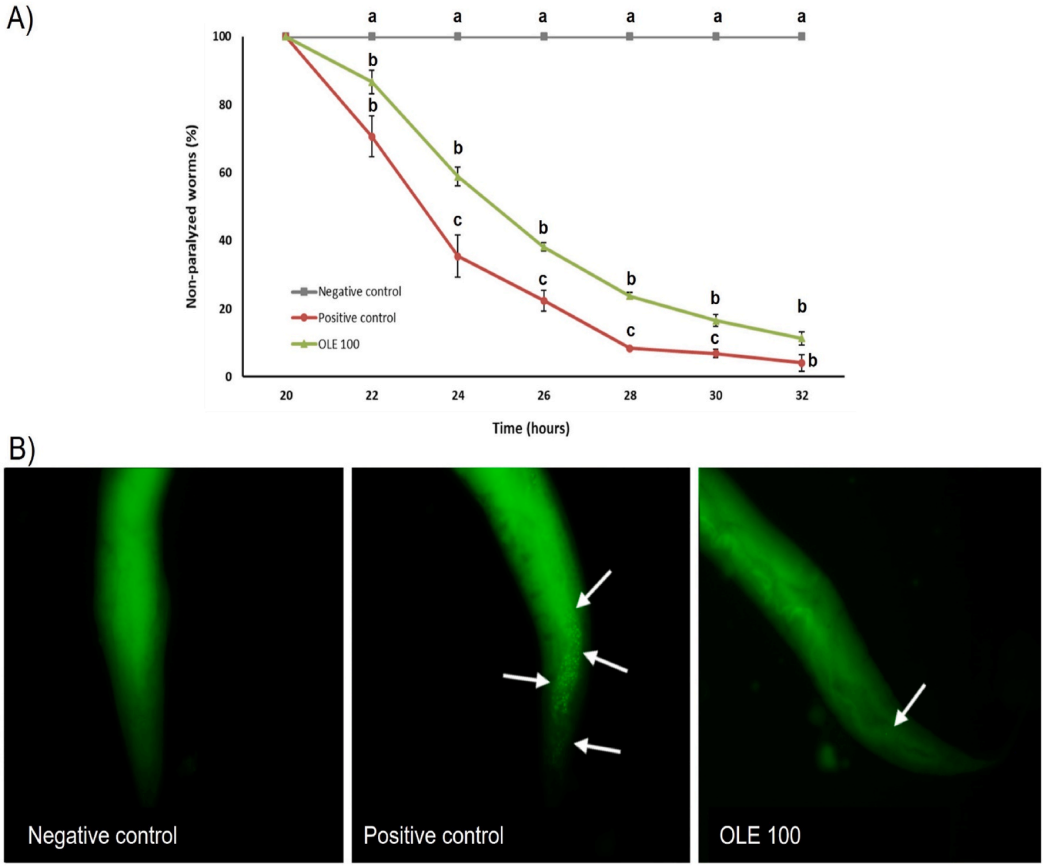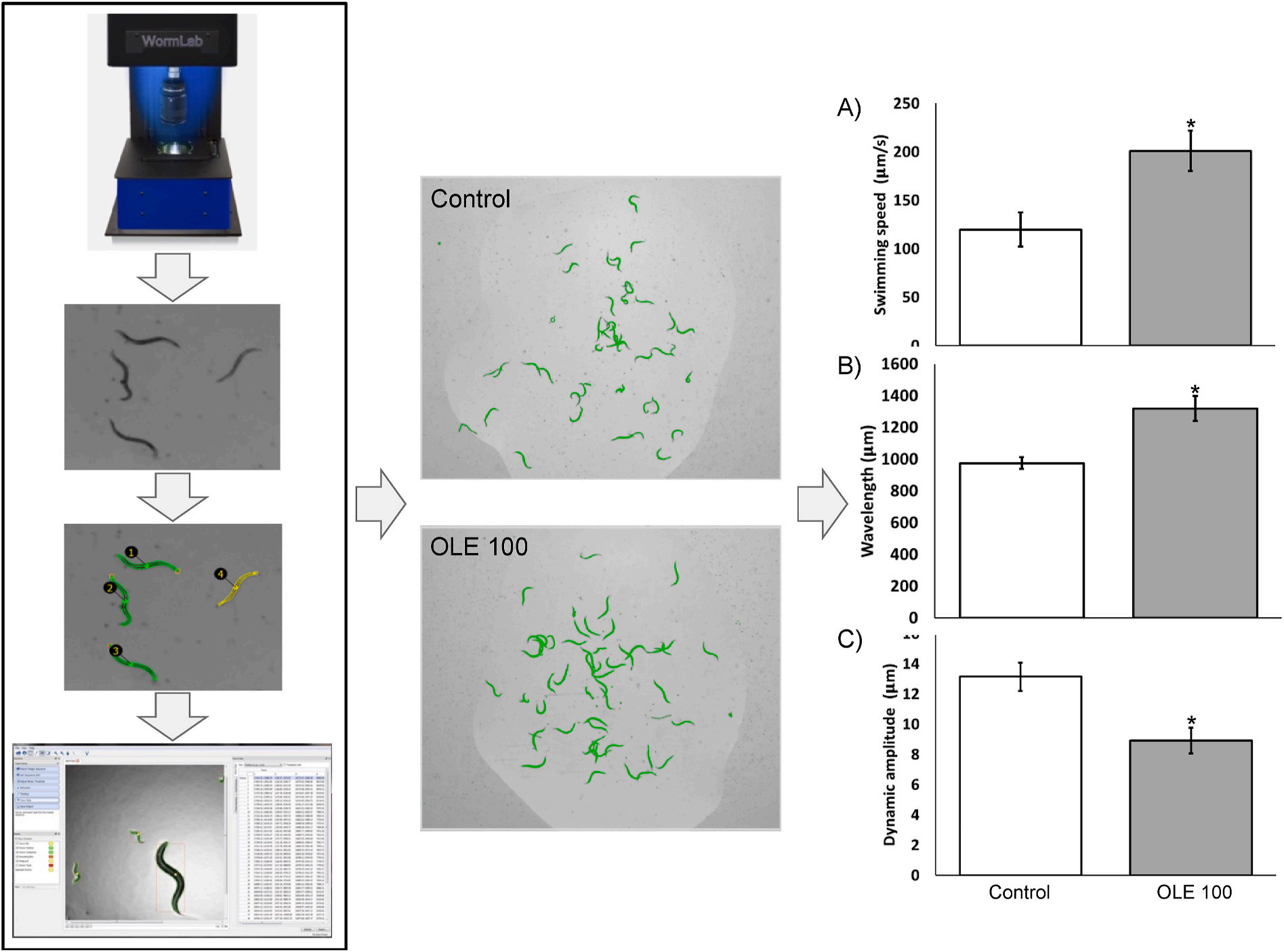Exploring the protective properties of oleuropein rich-olive leaf extract with C. elegans
2023-05-19 16:44
We often talk about the nutrition values and antioxidant properties offered by olive oil as nowadays many people are following the Mediterranean diet. The increasing demands are seeing a steady ramping-up of oil olive production year after year. According to a report, an estimated 750,000 tons of olive leaves would come around in Spain alone every year, as farmers are busy processing their olives. Like many other medicinal herbs, olive leaf has been seen used in traditional medicine to aid patients with various ailments, and modern pharmacological analyses have reported benefits on blood pressure, inflammatory status, serum lipid profile and glycaemia conditions. Worth noting, the antioxidant properties of oleuropein, the most predominant bioactive compound identified in olive leaves, are gaining more spotlights these years, and the paper we’re sharing today has everything to do with it. In this paper, the researchers focused on the potential protective effects of oleuropein against β-amyloid and tau proteotoxicity, the damages imposed by which are thought to link directly to the development of various neurodegenerative diseases like the Alzheimer’s Disease.
Toxicological characterization
Some toxicity evaluations were first established in vivo using the C. elegans platform. The research team treated live C. elegans nematodes with various concentrations of olive leaf oleuropein rich extract(OLE) and took a series of measurements such as percent survival rate, pharyngeal pumping rate, growth rate, and egg-laying ability to evaluate the negative effect the extract might impose. Results show that, all things considered, OLE was non-lethal to the exposed worms at all concentration tested with no distinctive negative effect on lifespan or reproduction.
Oxidative stress
The oleuropein rich extract was found effective at protecting the worms from oxidative stress. To simulate an oxidative stress environment, the researchers enlisted a stressor called AAPH. They found that AAPH induction markedly elevated ROS content in worms compared to the unexposed controls. In contrast, OLE treatment prevented AAPH related ROS enhancement, leading to similar values than those found in non-AAPH induced control group (Figure 1). It appears that the extract was certainly protective when environmental stressors were present.

Figure 1. OLE’s protective effect in the presence of an oxidative stressor.
Aβ toxicity and accumulation
After confirming the antioxidant property of OLE, the next evaluation came to the protection against Aβ toxicity and aggregation, as well as against tau proteotoxicity, the two hallmarks for Alzheimer’s Disease. Paralysis test was carried out to assess the effect of OLE on Aβ toxicity using CL4176 which expresses human amyloid β1–42 peptide in muscle cells. Symptoms of paralysis would be observed in these worms as they age or are subject to environmental stress, resembling the onset of AD. The trials revealed that OLE was effective in delaying those symptoms in worms treated (Figure 2A). What’s more amazing is that they were able to visually confirm the result. Thioflavin T staining was used specifically for staining Aβ aggregation and by comparison, they found the aggregates on the worms treated were significantly fewer than the ones observed in the control (Figure 2B). These results demonstrated that OLE treatment diminished Aβ production and/or accumulation in the Aβ human-transgenic model.

Figure 2. Effects of the oleuropein rich-olive leaf extract (OLE) on Aβ-induced paralysis phenotype in CL4176 transgenic strain.
Locomotive behavior related to tau proteotoxicity
Tau aggregation was analyzed by investigating swimming locomotive behavior. And the researchers employed another strain of nematode, BR5706, which would display impaired locomotive performance when subject to tau stressors. By using the WormLab station and software, they determined the swimming speed, wavelength and wavelength dynamic amplitude parameters of C. elegans. Overall, proaggregatory tau worms treated with OLE showed better locomotive parameters, with a higher speed and wavelength and a lower stretching effort (dynamic amplitude) compared with control groups (Figure 3). Similar to the result from the previous one, the scientists reported improved locomotive performance on the worms treated with OLE.

Figure 3. Effects of OLE on Tau-induced altered locomotive behavioral phenotype in BR5706 transgenic strain.
RNAi technology
To explore the molecular mechanisms underlying the effects found in Aβ toxicity experiments and the locomotive behavior assay, RNAi technology was used. The final results showed that DAF-16/FOXO and SKN-1/NRF2 elements of the insulin/insulin-like signaling pathway, as well as HSP-16.2 overexpression were involved.
Beyond appreciating the effort by the researchers who composed this paper to add one more potential tool to our expanding weaponry against neurodegenerative diseases like AD and PD, we should also come to appreciate how versatile the C. elegans platform has become. With the precision genome editing tools we have at hand these days, the wormbase is expanding like never before. For someone who’s working in this industry, it’s rather thrilling to see many trials of novel therapeutics against different neurodegenerative diseases are currently ongoing on the C. elegans platform. We are seeing an increasing amount of genetically modified strains for various disease models, which is making drug development more and more effective. So potentially, those little bodies may carry the future of mankind.
Reference:
Romero-Márquez JM, Navarro-Hortal MD, Jiménez-Trigo V, Vera-Ramírez L, Forbes-Hernández TJ, Esteban-Muñoz A, Giampieri F, Bullón P, Battino M, Sánchez-González C, Quiles JL. An oleuropein rich-olive (Olea europaea L.) leaf extract reduces β-amyloid and tau proteotoxicity through regulation of oxidative- and heat shock-stress responses in Caenorhabditis elegans. Food Chem Toxicol 2022;162:112914.





